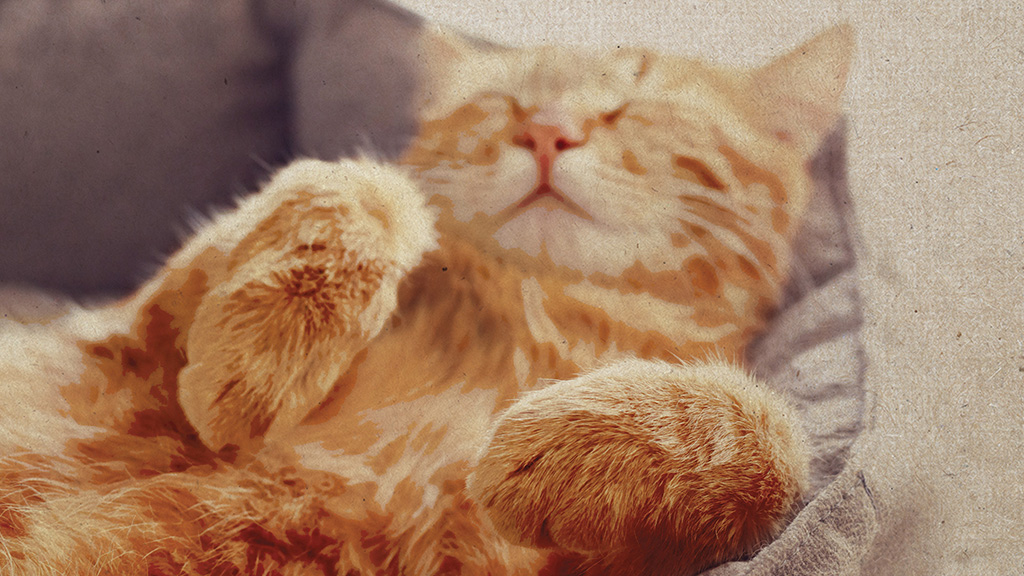
Tips for Adopting a New Cat or Kitten
With 2020 kitten season coming to a close, it’s a great time to consider adding a new cat to your family. If you’re thinking about adopting a new cat, you may have a few questions about how to welcome him/her into your home. We’ve got some tips that will help turn a tricky process into a smoother transition for all.
When bringing a new cat into the family:
Plan ahead
You’ll need to stock up on supplies before your cat arrives home – litter, a litter box, nutritious food, a scratching post, a cat tree, and more.
Show them the litter box right away
Since a new environment can be really stressful for a cat, it helps to show your new four-legged family member the litter box as soon as you bring them home. This lets them know right where to go, gets them familiar with your layout, and can lower the chances of accidents around the house.
Start off slow
While socialization is very important, it’s equally important to remember that cats take time to get used to their new surroundings. A good idea is to keep your new cat kid secluded in one room initially. Once acclimated, open them up to more of your home and create a space that’s just for them. Your new cat will build confidence knowing they have a designated spot in your home. Ideally, this place would be set apart from the busiest parts of your home, and may include a cat hammock or cat perch by a window — anything that helps them relieve stress, relax, and even play.

Hiding is normal
New faces, new smells, and a new environment are a lot to handle all at once. While your new cat is getting used to everything, they may want to hide for a bit to feel safer. Don’t worry — it’s totally normal, and they’ll come out eventually since there’s so much to explore!
Pro Tip: You can help them feel safer by establishing a secret hiding spot where they can get some alone time, like the bottom shelf of a bookshelf or behind a curtain. Bonus: you’ll know where to find them!
Scratching posts are your friends
Getting used to the reality of living in a domestic setting can sometimes be a struggle for a cat – this may present itself in the form of scratched furniture. You can address this after the fact by placing double-sided tape over any scratches. Cats dislike the feeling of the tape and will not return to scratch the furniture. Another recommendation is to place small scratching posts near common scratching areas to encourage them to scratch without causing destruction.
Learn cat tail language
You may be surprised to know that your cat can communicate quite a bit about its feelings just by the movement of its tail. For instance, if you see your cat kid walking around with its tail pointed straight up, this means your cat is content. Good! But what about when your cat’s tail is pointed downward and curled at the end? This is a sign of him/her being agitated. In either case, it can tell you a lot about how your cat is relating to what’s happening around them.
Keeping an eye on these signals and learning to speak this unique “language” will help you and your cat kid build a more hospitable environment for everyone involved.
Emergency fund
No matter how many cat kids you have, it’s always great to plan ahead for a healthy start when introducing a new member to your interspecies family. You can practice preventative care by scheduling regular vet visits, offering dental treats, and giving nail trims. Another way is to have an emergency care fund for the unexpected.
Introducing your new cat to their cat siblings:
Work with their unique personalities
You know the personalities of your cat kids better than anyone. Playful goofball? Aloof observer? Shy sweetheart? Keep personalities in mind when letting them interact. This will help your cat kids adapt better to change and begin bonding.
Start in separate rooms
Not all cats like to share their space right away. To get them used to new sounds and scents in the house, try keeping them in separate rooms at first. This gives them a chance to adjust at their own pace and eases them into the new family structure.
Share feeding time
Cats like to feel safe when they eat, so feeding your cats on opposite sides of the same door can get them used to eating together without feeling threatened. Plus, they’ll associate their new sibling with one of their favorite things: food!
Pro Tip: Find out what your new cat kid ate before you adopted them, then feed them the same thing or slowly transition them to the food their siblings are eating to avoid any tummy issues.

Trade places
After your cat kids have been in separate spaces for a bit, try swapping. This gets them used to each other’s scent gradually instead of all at once, which reduces tension (and gives them new things to sniff).
Making the decision to adopt a cat is exciting, but it’s also a big step. These tips are a great starting point, but remember that this is just the starting point. You’ll learn much more about your specific cat kid and their unique wants and needs. Having the patience and flexibility to navigate that adventure will ensure the best experience for both you and your cat kid.
For ongoing pet parent tips, follow us on Facebook and Instagram.
More Stuff You'll Love
Naturally Fresh Cat Litter Launches Improved Formula with a New Look and Introduces Fresh Shield Probiotic<sup>™</sup>
Eco-Shell, LP, manufacturer of the Naturally Fresh family of litter products, is announcing the launch of its enhanced formula: Ultra Odor Control designed with Fresh Shield Probiotic<sup>™</sup> technology.
Why Do Cats Bite?
Scene: You and your cat kid are snuggling on the couch. You’re gently petting them, and they’re calm and purring. Suddenly they turn around and bite you. Why do some cats bite when you pet them? And if a cat bites you, what does it mean? Read on to learn more about this feline phenomenon.
Why Do Cats Hiss?
Purring. Playing. Hissing. If you live with cats, you’ve most likely experienced all three behaviors — sometimes at the same time. But what does it mean when a cat hisses? Read on to learn more about why cats hiss — and what you can do about it.


